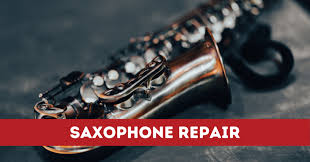Saxophone Hub
How to Identify Different Types of Saxophone Damage
 Introduction
Introduction
As a saxophonist, whether you’re a beginner or an experienced player, understanding how to identify saxophone damage is essential. Your saxophone is a delicate instrument, and even the smallest issue can impact your sound quality and overall performance. The last thing you want is to continue playing with an instrument that isn’t in top condition. In this guide, we’ll help you identify the different types of saxophone damage, from minor dents and leaks to more serious issues that may require professional attention. Knowing how to identify and address saxophone damage will ensure that your instrument stays in excellent shape for years to come. Contact Horns Engineer for a free consultation and let us help you with your saxophone repairs!
Recognizing Minor Saxophone Damage
Minor damage to your saxophone often doesn’t affect the performance of the instrument immediately, but if left unchecked, it can lead to bigger problems down the line. Understanding what constitutes minor damage will help you know when to take action. Here are some common types of minor damage:
- Dents: Small dents can occur when the saxophone is dropped or knocked against something hard. While these might not cause immediate issues, they can alter the tone or timbre if left untreated. Check the bell, bow, and neck for any visible signs of dents.
- Loose or misaligned pads: The pads are responsible for sealing the tone holes to produce a clean sound. Over time, they may become loose or misaligned, leading to minor air leaks. If your saxophone seems slightly out of tune or difficult to play, it might be a sign of pad issues.
- Scratches or minor cosmetic damage: While these don’t affect the sound, they can be frustrating for owners who want to maintain the instrument’s aesthetic. Regular cleaning and care can prevent these minor scratches from becoming more severe.
Is your saxophone showing signs of minor damage? Contact us for expert advice and a free consultation! We offer saxophone repair services across Nigeria, ensuring your instrument plays at its best.
How to Spot Major Saxophone Damage
While minor damage is relatively easy to address, major saxophone damage can drastically affect your instrument’s playability and overall sound. Recognizing the signs of significant damage early on is crucial to prevent further issues and costly repairs. Here’s what to look out for:
- Cracks in the body or neck: A crack, particularly in the neck or body of the saxophone, can affect the airflow, tone production, and overall structural integrity. Cracks often result from a hard impact or long-term exposure to extreme temperature changes. If you notice a crack, it’s important to get your saxophone repaired immediately.
- Major leaks: If air is escaping through any part of the saxophone, it can result in a dull, flat sound. Leaks in the tone holes or joints are more than just a minor inconvenience; they affect the overall acoustics of the instrument. To check for leaks, play the saxophone softly while closing all the keys to listen for any sound escaping.
- Bent keywork: The keys on your saxophone should be able to move freely. If any of them are bent, stuck, or no longer respond as they should, it could be a sign of major damage. Not only does this make playing difficult, but it can also permanently damage the key mechanism if not repaired promptly.
- Mouthpiece damage: A cracked or chipped mouthpiece can drastically affect your sound and playability. This is considered major damage because it compromises both the comfort and tone of the instrument.
Are you dealing with major damage? Don’t wait! Reach out to Horns Engineer for expert saxophone repairs in Nigeria. We’ll restore your saxophone to top condition.
Why Prompt Repair Is Important
Whether the damage is minor or major, prompt repair is essential for maintaining the longevity and performance of your saxophone. Waiting too long to fix an issue can lead to more expensive repairs and even permanent damage. For example, a minor dent can worsen over time, affecting the acoustics and leading to the need for more extensive work. Similarly, a small leak can grow into a bigger problem if not addressed quickly, potentially damaging the pads and springs.
By catching and addressing issues early, you can extend the life of your saxophone and ensure it continues to deliver high-quality sound. Need an expert diagnosis? Contact us via WhatsApp at +234-813-540-4292 for a consultation today!
How to Prevent Saxophone Damage
Prevention is key when it comes to preserving your saxophone. Regular maintenance can help you avoid most damage, whether it’s from physical impacts, leaks, or wear and tear. Here are some tips to keep your saxophone in excellent condition:
- Use a saxophone stand: Always place your saxophone on a secure stand when you’re not playing. This prevents it from being knocked over and sustaining damage.
- Invest in a protective case: When transporting your saxophone, always use a hard-shell case to prevent damage from drops or impacts.
- Clean and maintain regularly: Regular cleaning can prevent buildup and corrosion that may lead to damage. Ensure that you clean the pads and the tone holes after each use.
- Get annual professional maintenance: Even if there are no visible signs of damage, it’s a good idea to take your saxophone to a professional for an annual check-up. This will help you catch any potential issues before they become serious.
Prevent future damage by scheduling an annual check-up with Horns Engineer. Our expert team offers top-notch maintenance and repair services for saxophonists across Nigeria.
How to Address Common Saxophone Damage
If you’ve noticed minor or major damage, it’s time to act. Here are some steps to address common types of saxophone damage:
- For minor dents: Small dents can often be removed with specialized tools. Our technicians use professional dent removal techniques to restore the body of your saxophone.
- For loose pads: Pad replacement or adjustment may be necessary. If the pads are worn out or misaligned, it’s best to have them replaced by a professional to ensure proper sealing and tone production.
- For cracks: Cracks require immediate attention and should be repaired as soon as possible. We offer high-quality repairs that restore the integrity of your saxophone’s body, preventing further damage.
- For bent keywork: Bent or broken keys should be fixed by a professional. We provide key repair services, including straightening bent keys and replacing broken parts to ensure smooth functionality.
Conclusion
Identifying and addressing saxophone damage early can make a huge difference in the longevity and sound quality of your instrument. Whether it’s minor cosmetic issues or major structural damage, taking care of your saxophone ensures you continue to play at your best. At Horns Engineer, we specialize in saxophone repairs across Nigeria, offering expert services and a satisfaction guarantee.



